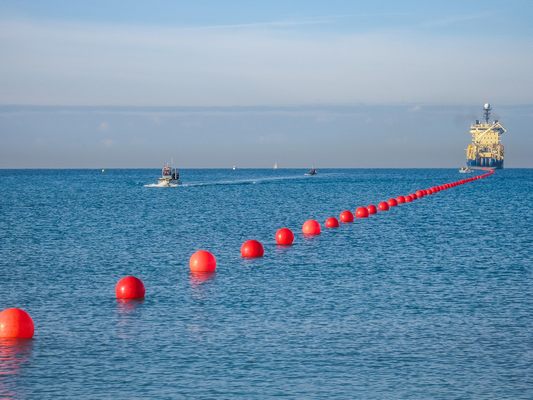Submarine Cable Resilience

In an increasingly interconnected world, submarine telecom cables serve as the lifelines of the global digital economy, facilitating over 99% of international data exchange. These cables enable communication, finance, cloud services, and vital infrastructure to operate seamlessly across borders. Yet, despite their critical importance, submarine cables face a range of vulnerabilities, from natural disasters to ageing infrastructure to accidental human activity such as fishing and anchoring. Disruptions can affect industry and government operations, as well as the ability of individuals to access education, healthcare and financial services. Over 200 cable repairs were reported worldwide in 2023 by the ICPC - equivalent to more than three cable failures per week on average. With the world's reliance on stable, high-speed Internet growing every day, the resilience of these cables is paramount.
Multistakeholder dialogue, including among governments, regulatory authorities, industry leaders, submarine cable experts, and international organisations, is vital for enhancing the resilience of submarine telecom cables in order to safeguard our digital future and global economic stability.
 The International Advisory Body for Submarine Cable Resilience was established by the International Telecommunication Union (ITU) in partnership with the International Cable Protection Committee (ICPC) in November 2024, with the aim of promoting dialogue and collaboration on potential ways and means to improve the resilience of this vital infrastructure that powers global communications and the digital economy.
The International Advisory Body for Submarine Cable Resilience was established by the International Telecommunication Union (ITU) in partnership with the International Cable Protection Committee (ICPC) in November 2024, with the aim of promoting dialogue and collaboration on potential ways and means to improve the resilience of this vital infrastructure that powers global communications and the digital economy.
The Advisory Body, co-chaired by H.E. Minister Bosun Tijani, Minister of Communications, Innovation and Digital Economy of the Federal Republic of Nigeria, and Prof. Sandra Maximiano, Chair of the Board of Directors of the National Communications Authority of the Republic of Portugal (ANACOM), will address ways to improve cable maintenance, prevent damage from natural hazards and accidental human activities, ensure faster recovery times after disruptions, increase redundancy and promote sustainable practices in the industry.
Composition of the Advisory Body
With an initial term of two years, the Advisory Body comprises 40 leaders and experts from the public and private sectors, including representatives from submarine cable operators, telecommunications companies, government agencies, maritime authorities, and international organizations, as well as relevant UN agencies that are serving as advisors.
The Advisory Body’s members represent all six of the global ITU regions, ensuring diversity and inclusion from countries ranging from small island states to major economies, and capturing the perspectives of those whose livelihoods, economies, and digital futures depend on the operation of submarine telecommunication cables, as well as those who work to deploy, maintain and protect this vital infrastructure.
Meet the Members
Next Steps
The Advisory Body will meet at least two times a year. It will consult with experts on telecommunications, digital resilience infrastructure development, infrastructure investment and international policy to provide strategic guidance and encourage sector-wide collaboration. The first virtual meeting is scheduled for December 2024. The first physical meeting is planned to take place during the inaugural Submarine Cable Resilience Summit scheduled to take place in Abuja, Nigeria in late February 2025.
Newsletter
Subscribe here for the latest news
Contact us:
Email:
subseacables[@]itu.int
Image 1: Courtesy of ASN
Image 2: Courtesy of HMN Technologies